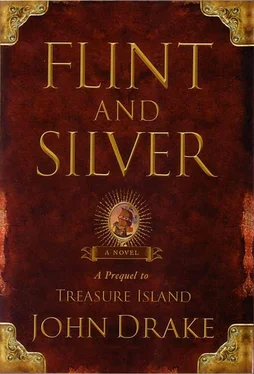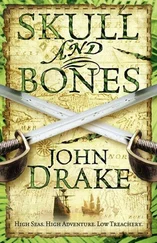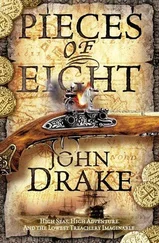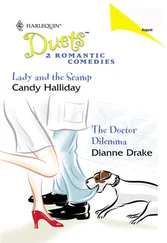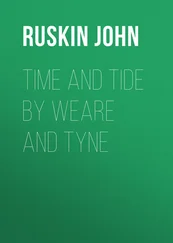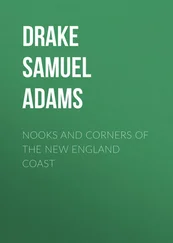John Drake - Flint and Silver
Здесь есть возможность читать онлайн «John Drake - Flint and Silver» — ознакомительный отрывок электронной книги совершенно бесплатно, а после прочтения отрывка купить полную версию. В некоторых случаях можно слушать аудио, скачать через торрент в формате fb2 и присутствует краткое содержание. Жанр: Прочие приключения, на английском языке. Описание произведения, (предисловие) а так же отзывы посетителей доступны на портале библиотеки ЛибКат.
- Название:Flint and Silver
- Автор:
- Жанр:
- Год:неизвестен
- ISBN:нет данных
- Рейтинг книги:4 / 5. Голосов: 1
-
Избранное:Добавить в избранное
- Отзывы:
-
Ваша оценка:
- 80
- 1
- 2
- 3
- 4
- 5
Flint and Silver: краткое содержание, описание и аннотация
Предлагаем к чтению аннотацию, описание, краткое содержание или предисловие (зависит от того, что написал сам автор книги «Flint and Silver»). Если вы не нашли необходимую информацию о книге — напишите в комментариях, мы постараемся отыскать её.
Flint and Silver — читать онлайн ознакомительный отрывок
Ниже представлен текст книги, разбитый по страницам. Система сохранения места последней прочитанной страницы, позволяет с удобством читать онлайн бесплатно книгу «Flint and Silver», без необходимости каждый раз заново искать на чём Вы остановились. Поставьте закладку, и сможете в любой момент перейти на страницу, на которой закончили чтение.
Интервал:
Закладка:
Faced with these questions, and knowing that Robert Louis Stevenson was not going to answer them, I decided to do so on his behalf by writing a series of books about what happened before Treasure Island, and hoping that, if I did it well enough, he might forgive me should we meet in some other place.
To increase my chances of forgiveness, I read and re-read Treasure Island. I went through it page by page, taking notes and producing a cross-referenced file of information with which my book should be in harmony. If Flint and Silver is to be a "prequel" it should contain nothing irreconcilable with Treasure Island. This does not mean that I never departed from – or even contradicted – some of Stevenson's detail, but that I did my best never to do so in ignorance, or without good reason. For instance, Treasure Island is a children's book, because Stevenson wrote it for his thirteen-year-old step-son Lloyd Osbourne, who wanted no women in the story: a perfectly reasonable sentiment for a thirteen-year-old, but I am older than that and I write no books without women and the delights and sorrows that go with them; so my work is not for children.
Conversely, I was absolutely true to Stevenson in correcting a false impression, universally held, of Long John Silver himself. Almost everyone knows Robert Newton's incomparable representation:
"Ah-harr, Jim lad!" of Long John. But who knows that this boozy, greasy, squinting creature is nothing like the Long John that Stevenson created? The real Long John was, in Stevenson's words:
… very tall and strong, with a face as big as a ham. Plain and pale but intelligent and smiling… clean and pleasant-tempered.
Of all the actors who have played Silver, the closest, in my opinion, was Charlton Heston, and even he was too old at the time. If you want to picture Long John, think of a young Charlton Heston, swinging a broadsword as he did in El Cid.
I kept Silver's speech and character as close as possible to Stevenson, though stressing Silver's belief that he was a "gentleman of fortune" and not a pirate. But I plead guilty to making him younger than Stevenson did. He imagined Silver as middle-aged, while I've re-incarnated him in the prime of manhood. Likewise I've romanced Silver's lady, Selena, very considerably. Stevenson refers to her as an "old negress" and she never makes an appearance in his book, whereas my Selena is young and delectable, for she is the heroine, and must be lovely, as an irrefutable requirement of good story-telling.
Flint, the other major character, was long dead in Treasure Island and Stevenson gives no clue to his appearance, though his many references to Flint point to a monster in the shadows. "He was the bloodthirstiest buccaneer that ever sailed," says Squire Trelawney. "Blackbeard was a child to Flint. The Spaniards were so prodigiously afraid of him, that, I tell you, sir, I was sometimes proud he was an Englishman." Here was the opportunity to create something special, and I have tried. He could not be a simple brute but someone with glittering talents as well as psychotic menace. Hence Joe Flint with his holy-sadist father, his lightning reactions, his amoral cunning, his beautiful clothes, his gleaming smile… and his little problem with women. Flint, of course is the answer to the great question "why was the treasure buried?" It was buried for Flint, to be exhumed by Flint, for Flint's exclusive use, and perhaps with Billy Bones allowed to carry the weight of it.
Poor, loyal Billy Bones. He is a brute: a thumping, bruising brute, just as Stevenson described him, though younger and bigger. But the notebook and quadrant in his chest in Treasure Island showed that he was a literate, numerate brute and capable of plotting a course. So I made him a master's mate. He was no mere "hand before the mast" and he was much wronged by his idol and master. Left to himself in the Royal Navy, Billy Bones would have been a perfectly decent ship's officer, no worse than many others with thick boots and heavy fists.
Further characters likewise spring from Stevenson. I have described the flogging of Ben Gunn which began his descent into insanity. Blind Pew, who terrified me as a child, I made into "Mad Pew": sinister and peculiar even before he lost his sight. Israel Hands in Treasure Island was the drunken thug who chased Jim Hawkins up the mast with a knife. But Stevenson also said that Hands was Flint's gunner, and a gunner was a senior officer, responsible for guns, carriages, shot and powder. He kept written records of these expensive stores, and he held the keys to the magazine, where a single act of carelessness could destroy the entire ship. Apologies to Stevenson, but this is inconsistent, and my Israel Hands is a sober and thoughtful man. He is Silver's chief ally, and a considerable expert in the use of the nine-pounder gun.
My favourite character is Cap'n Flint, the parrot. I had almost finished writing the book when, by chance, I met a parrot at an antiques fair in Staffordshire. It was a huge bird, sitting on the shoulder of a lady – one of the traders – nuzzling her ear and preening her hair, taking a strand in its beak and gently running down the strand towards its end. Later I read of Dr Irene Pepperberg whose research suggests that parrots have an intelligence equal to that of the higher primates, with the bonus that they can speak. Thus I learned that the fantasised intelligence I had given to Cap'n Flint was perfectly reasonable. Parrots really are that clever. And they can crack Brazil nuts in their beaks, or bite off Black Dog's fingers.
Other characters such as Captain Springer, Midshipman Hastings and Midshipman Povey are entirely mine and are as true to the period as I can make them. Thus midshipmen were sometimes very young. Nelson famously went to sea at twelve and his contemporary, William Dillon, states in his memoirs2 that he went to sea aboard HMS Saturn in 1790 aged nine and a half years.
Research is vital to historical novels but it should never show, because nobody wants a history lesson while reading for pleasure. Nonetheless, here are a few points that might be of interest:
CARIBBEAN PIRACY: THE REALITY
Piracy in the West Indies flourished in the seventeenth and early eighteenth centuries, when it was practised under every shade of legality from official, state-licensed "privateering", through bribery of the authorities, to outright criminality.3 Among this varied company there were indeed some who considered themselves "gentlemen of fortune" and sailed under articles. Long John would have been pleased to know that a set of articles – those of Bartholomew Roberts – is on the internet today for all to see.4
Likewise there really was a pirate by the name of England,5 namesake of my England who tried to teach Long John the art of navigation. But the real England died in 1720, and in historic fact the various royal navies, especially the British, French and Spanish, had stamped out much of West Indian piracy by the middle of the eighteenth century. In earlier times piracy had flourished because the governments who paid for navies baulked at enforcing their laws on a raw frontier half a world away. Suppressing piracy meant sending out many ships for long periods, and politicians doubtless wept and groaned at the cost
Lewis, Michael A., editor, Dillon's Narrative Vol I, Navy Records Society, 1953
Rediker, Marcus, Villains of all Nations: Atlantic Pirates in the Golden Age, Beacon Press, Boston, 2004 www.geocities.com/2/piratearticles.htm
Seitz, Don C., Under the Black Flag, Dover Publications, 2002 of this until the pain of piracy grew unbearable, which it did in the early years of the eighteenth century when such fabulous wealth was generated in the region, especially from sugar, that no government would share it with pirates.
Читать дальшеИнтервал:
Закладка:
Похожие книги на «Flint and Silver»
Представляем Вашему вниманию похожие книги на «Flint and Silver» списком для выбора. Мы отобрали схожую по названию и смыслу литературу в надежде предоставить читателям больше вариантов отыскать новые, интересные, ещё непрочитанные произведения.
Обсуждение, отзывы о книге «Flint and Silver» и просто собственные мнения читателей. Оставьте ваши комментарии, напишите, что Вы думаете о произведении, его смысле или главных героях. Укажите что конкретно понравилось, а что нет, и почему Вы так считаете.
